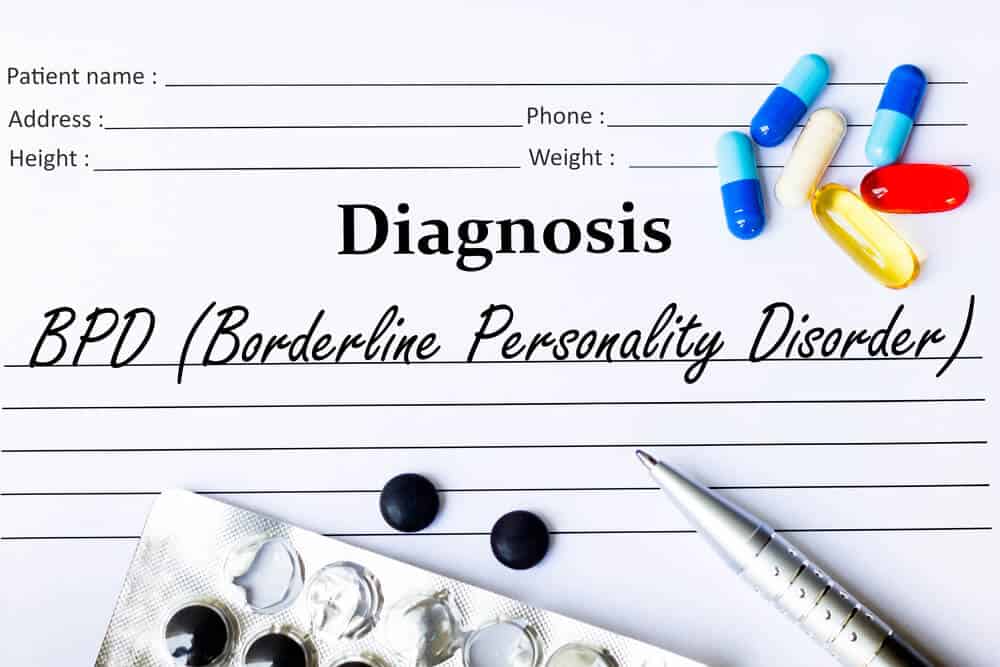
Are PTSD and BPD Related?
Seven percent of the U.S. population will have post-traumatic stress disorder (PTSD) in their lifetimes, while nearly six percent of the U.S. population will have borderline personality disorder (BPD). But how many of these diagnoses overlap?
Research consistently shows that having one mental health condition makes you more likely to develop another. However, it appears that some mental health conditions coexist more often than others. Some conditions, like BPD, are linked to childhood trauma, which can make you more likely to develop other mental illnesses, like depression, anxiety, and PTSD.
It’s common to have both BPD and PTSD. Between 25 and 60 percent of those with BPD also have PTSD, a rate much higher than what is seen in the general population. You might be wondering how these two disorders, which seem different on the outside, are related. In this article, we’ll explore PTSD and BPD individually, before considering the relationship between the two.
What is PTSD?
Like all mental health conditions, anyone can develop PTSD — but unlike other mental illnesses, PTSD is triggered by the occurrence of a specific event. Someone who has lived through a traumatic event, whether they experienced it firsthand or witnessed it secondhand, will often experience difficulty adjusting to life after their trauma and coping with the complicated emotions of the event. Usually, this natural response improves with time and self-care. If it doesn’t, this may be a sign of PTSD.
Symptoms of PTSD can last for months, or even years, after a traumatic event. For example, 13 percent of police officers who responded to the 9/11 terrorist attacks reported PTSD symptoms over a decade after the incident. People with PTSD often experience flashbacks, nightmares, and severe anxiety related to the event. According to Mayo Clinic, this can lead to avoidance of reminders of the event, negative changes in thinking and mood, being easily startled or frightened, aggressive behavior, sleep disruptions, and self-destructive behavior, such as drinking too much or driving too fast.
PTSD is often associated with soldiers who return home after combat, but members of the military are not the only people who develop PTSD. Other traumatic events that can trigger PTSD include natural disasters, terrorist attacks, violent assault, rape, or a serious accident.
This is by no means an exhaustive list of events that can trigger PTSD. It’s important to remember that what makes an event traumatic is not the event itself, but the way a person experiences and responds to it. For this reason, the same event could trigger PTSD in one person, while another person might not view this experience as traumatic.
Some factors may make one person more likely to develop PTSD than another. These factors include:
- Sex. Women are more likely to develop PTSD than men.
- Stress. Experiencing stress before or after a traumatic event may make a person vulnerable to developing PTSD.
- History of mental health issues. People who already suffer from depression, anxiety, or another mental illness may be predisposed to developing PTSD following a traumatic event.
- Lack of support. Loss of support systems or psychosocial resources is associated with developing PTSD after a traumatic event.
Though we often associate it with adults, children can also develop PTSD. Because children do not know how to process their thoughts and feelings after a traumatic event in the same way that an adult can, they may exhibit different symptoms than adults with PTSD and may not view their symptoms as related to the traumatic event. Symptoms of PTSD that are unique to children include reenacting the event through play, acting younger than their age (for example, sucking their thumb or wetting their bed years after these behaviors disappeared), and throwing temper tantrums.
What is BPD?
As a personality disorder, BPD impacts every part of a person’s life, from the way they think and feel about themselves and others, to the types of relationships they are able to develop. The disorder is characterized by an intense fear of abandonment, impulsivity, inappropriate anger or mood swings, and difficulty tolerating being alone.
Like all of us, people with BPD want to have close relationships with others, but may inadvertently push people away to avoid being hurt. As a result, they typically report a pattern of unstable relationships. They may cycle from over-idealizing someone one moment to vehemently hating them the next in an act known as “splitting,” or sabotage themselves by suddenly leaving a positive relationship or ending a close friendship.
Likewise, their self-image may be similarly unstable. They may experience rapid changes in identity that lead to shifting goals and values. Or, they may view themselves as fundamentally “bad.” They may even experience periods of stress-related paranoia or depersonalization and derealization, during which they may feel disconnected from their body or as if they are not real.
People with BPD face difficulty regulating their emotions. They experience their emotions more intensely than the average person, which may lead to risky or impulsive behavior, such as overspending, violence, or self-harm (i.e. cutting, substance abuse, etc.).
BPD typically emerges in early adulthood, and its symptoms often improve with age. Unlike PTSD, however, it is rarely, if ever, diagnosed in children or adolescents. Children and teenagers frequently outgrow traits like impulsivity, disproportionate anger, or poor self-esteem. It’s also common for children to experiences shifts in identity — such as changing what they want to be when they grow up — as they grow and learn about themselves. For a diagnosis, personality disorders like PTSD require a person to demonstrate a stable pattern of characteristics and behaviors that persists into adulthood.
The diagnosis of BPD has endured some controversy in recent years. Nearly 75 percent of patients with BPD are women, leading some to believe that the diagnostic criteria are inherently biased — and perhaps even sexist. Others say that men with BPD are more likely to be misdiagnosed with other conditions, such as depression or anxiety, which may result in skewed statistics.
The Relationship Between PTSD and BPD
At least one-quarter of patients with BPD also suffer from PTSD. The comorbidity of BPD and PTSD is incredibly common, but can also complicate treatment. Because treating co-occurring psychological disorders is more difficult, it’s fundamental for clinicians and patients to understand the similarities and differences between BPD and PTSD, so they comprehend why these disorders often overlap and how they can be effectively treated when they present together.
One compelling reason why BPD and PTSD frequently occur together is the relationship between BPD and childhood trauma. As much as 90 percent of BPD patients may have experienced childhood neglect or abuse. The presence of childhood trauma is also linked to the severity of BPD. Still, as in PTSD, not every person who experiences childhood trauma goes on to develop BPD.
Researchers theorize that, like in PTSD, patients with BPD possess genetic risk factors that are triggered or “turned on” by childhood trauma, leading to symptoms of BPD later in life. It’s possible that some of the risk factors for BPD and PTSD overlap, leading to the frequent comorbidity of BPD and PTSD.
In fact, many genetic risk factors for mental illness are nonspecific, meaning they predispose a person to develop any mental illness rather than a particular diagnosis. As a result, patients with BPD may be more likely to develop any mental illness than the general population. Data supports this conclusion: 88 percent of patients with BPD also have an anxiety disorder, and 50 to 65 percent may also have a substance use disorder.
Additionally, some people believe the impulsive and risky behavior seen in patients with BPD may place them at higher risk of experiencing traumatic events, such as car accidents or sexual assaults, and therefore at higher risk of developing PTSD. However, this assertion is incredibly harmful in that it insinuates that it is the BPD patient’s fault that they experienced a traumatic event. Rape, in particular, is never the victim’s fault, and the suggestion that the person could have done something to prevent it (such as acting or dressing differently) furthers the stigma that prevents many victims from coming forward.

Treating PTSD and BPD
Dialectical behavior therapy (DBT) was originally developed as a treatment method for BPD. Since then, it has been appropriated to treat a number of other disorders, including PTSD. DBT teaches participants four main coping skills to improve symptoms and quality of life: mindfulness, distress tolerance, interpersonal effectiveness, and emotional regulation. If you are suffering (or suspect you may be suffering) from PTSD and BPD, contact us today to learn if DBT treatment at The Meadowglade could be right for you.
